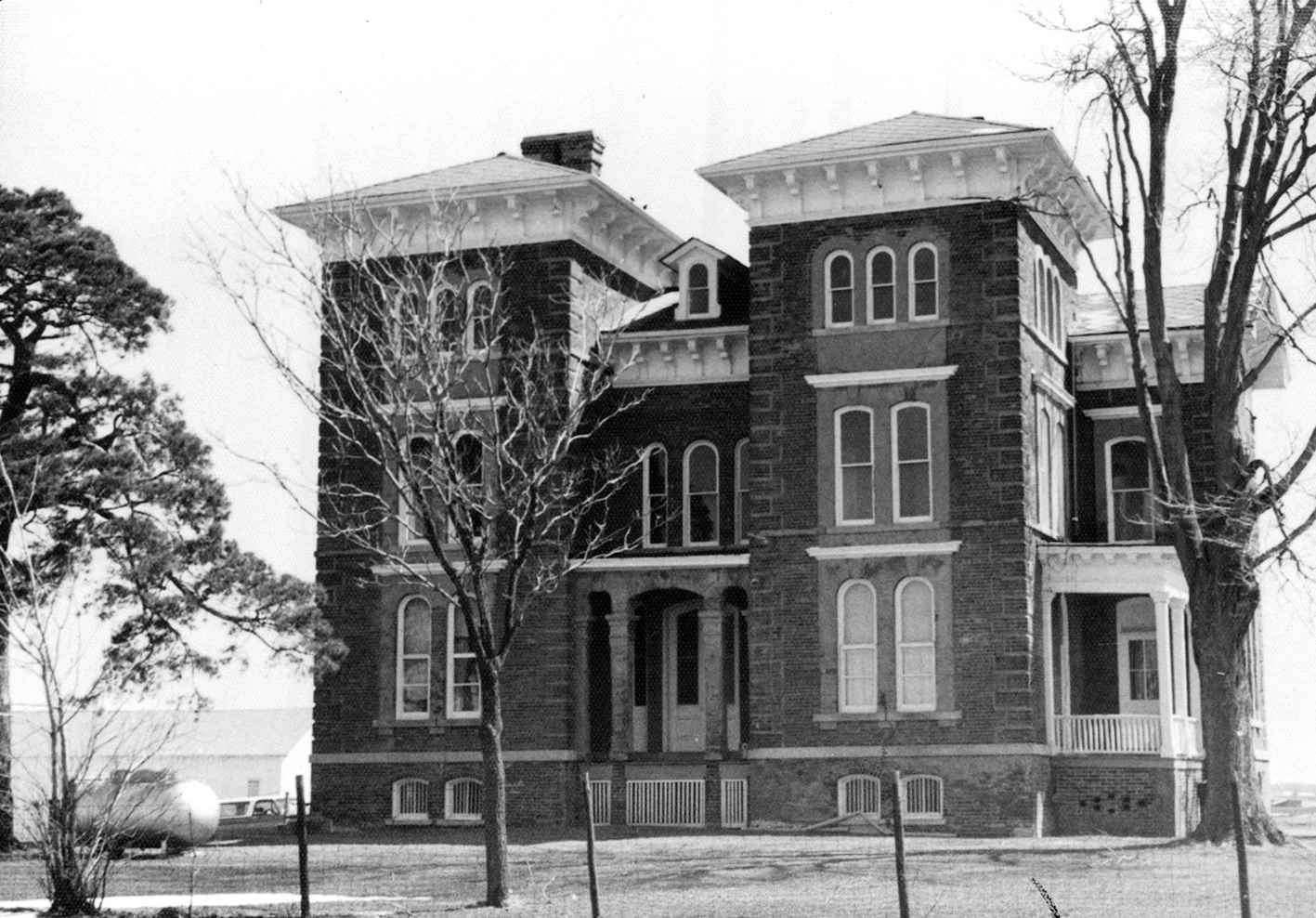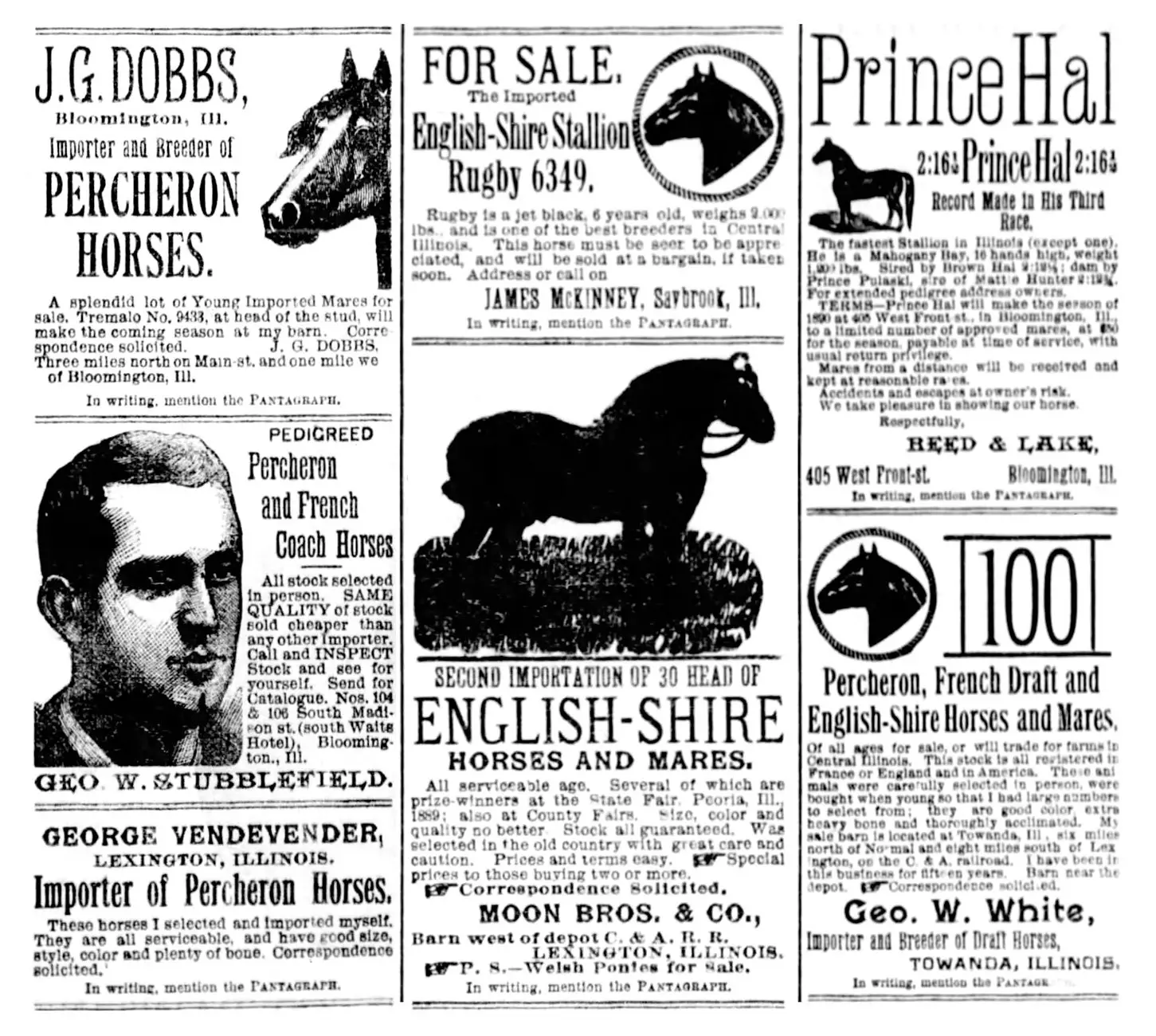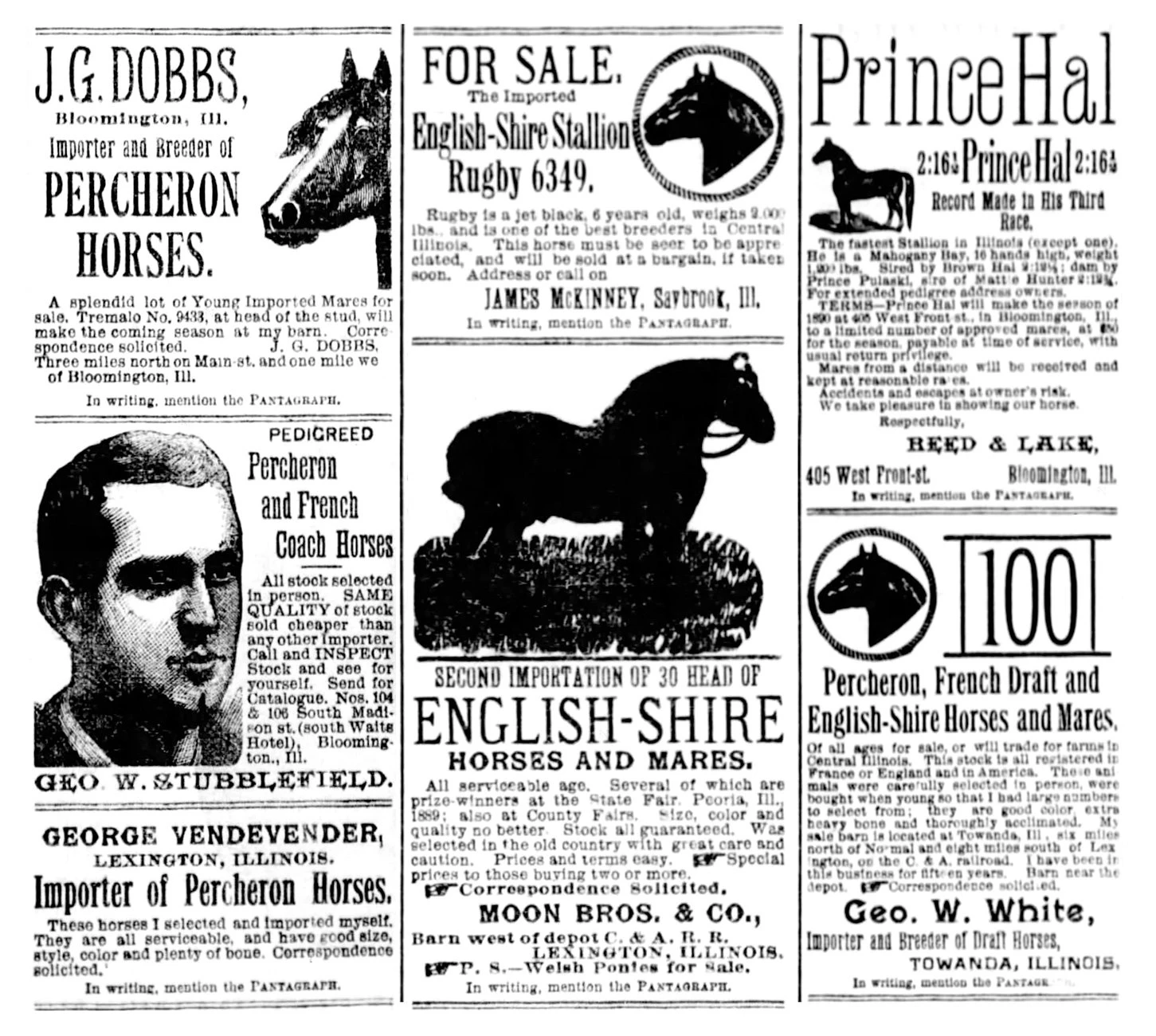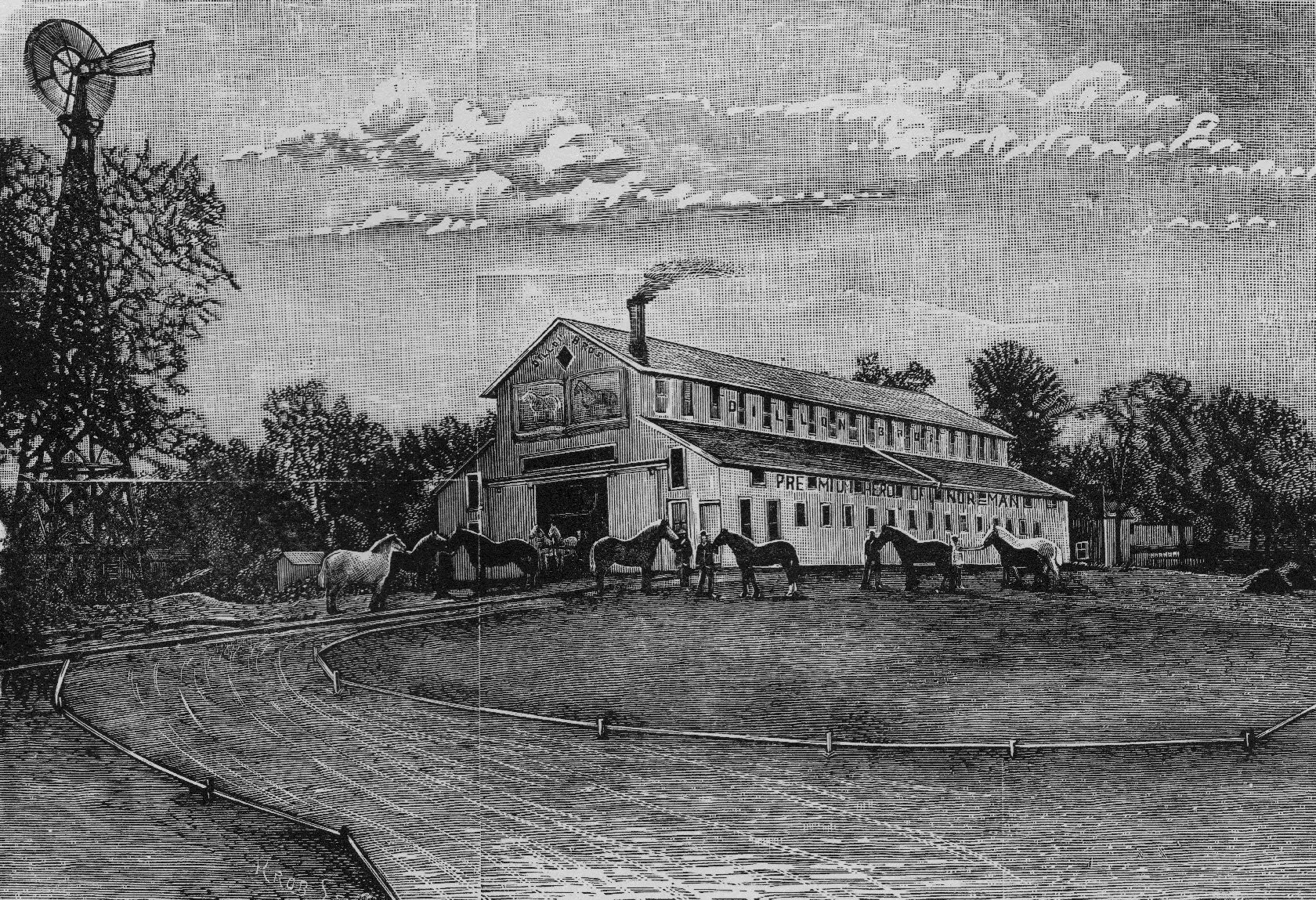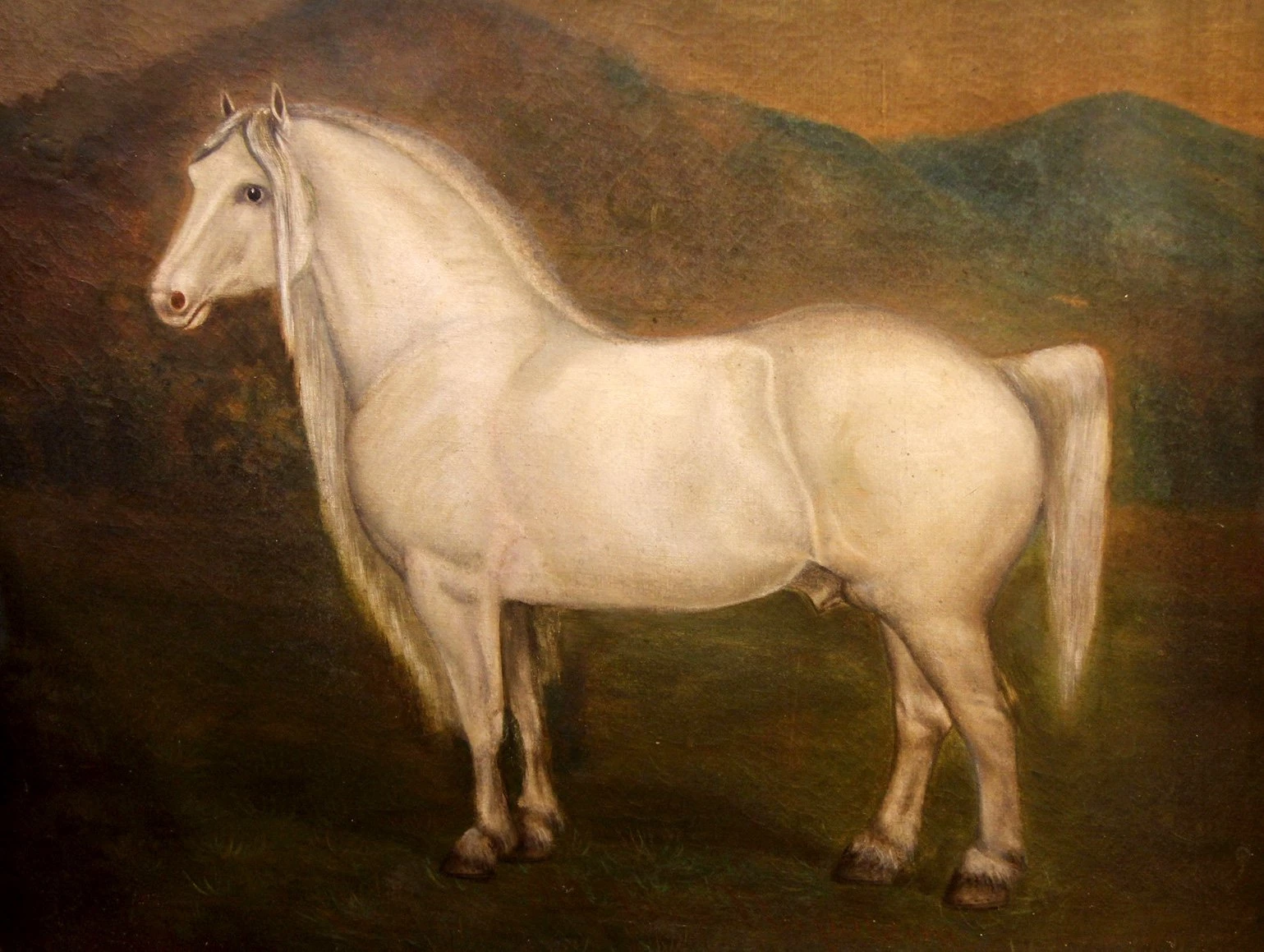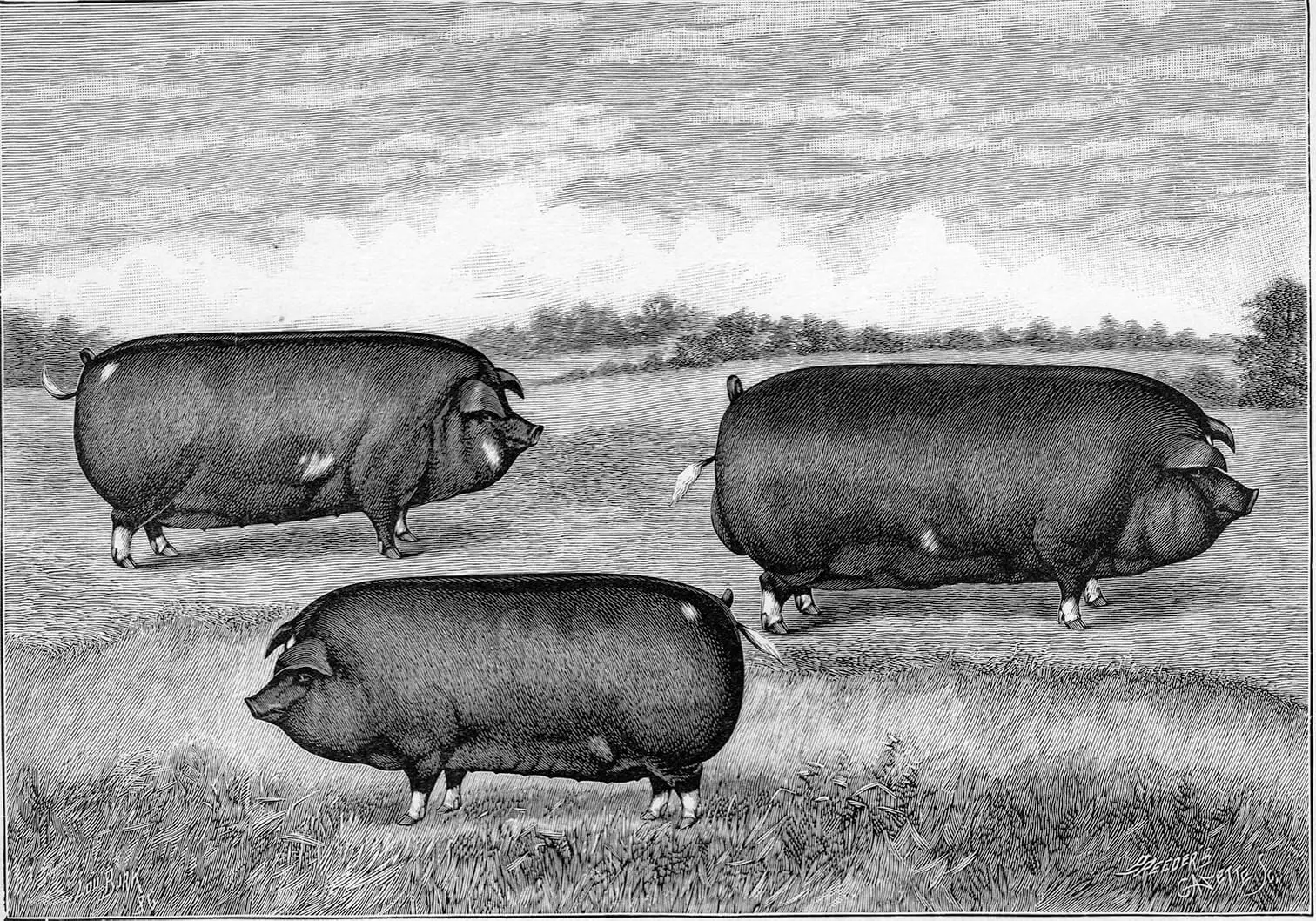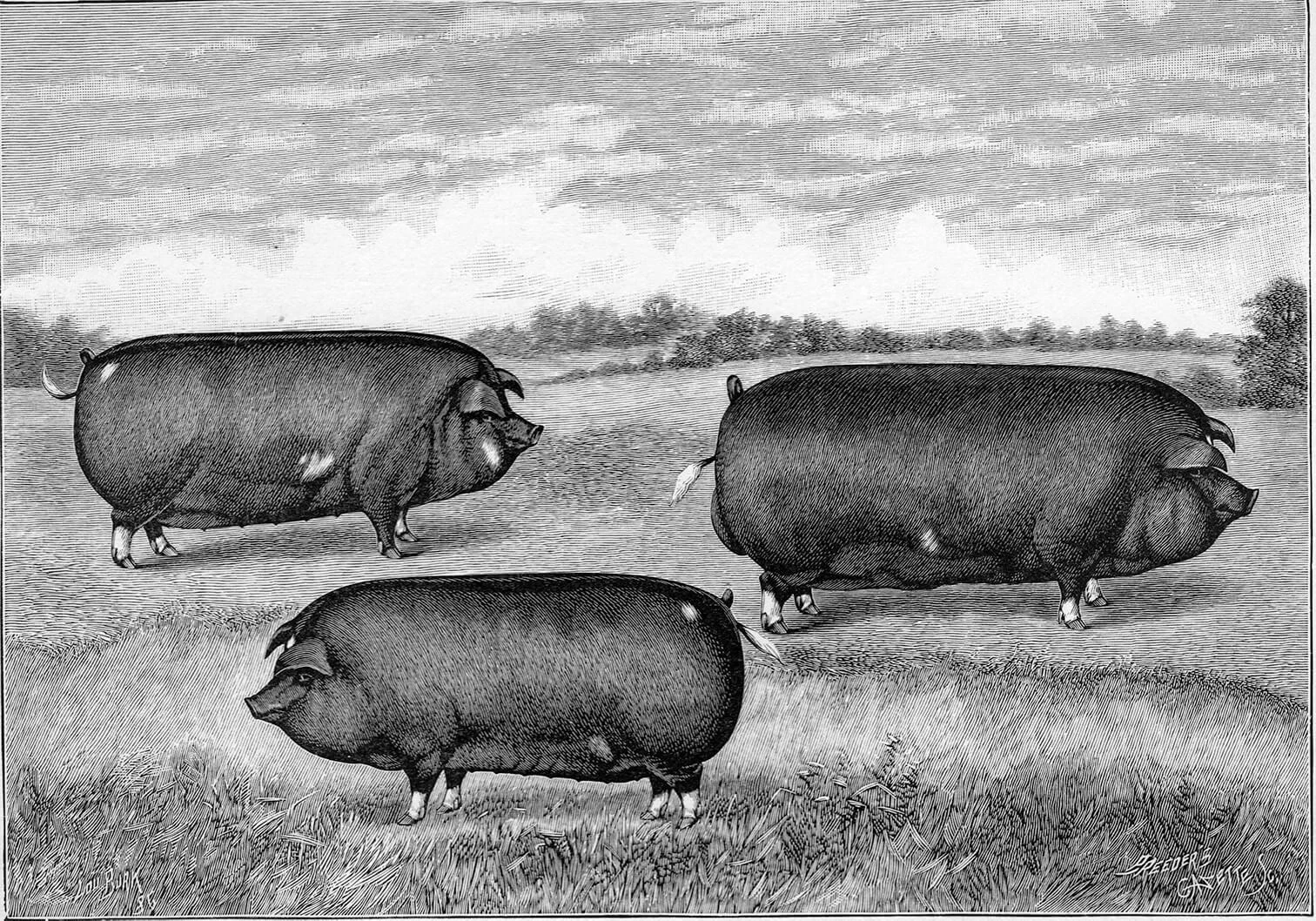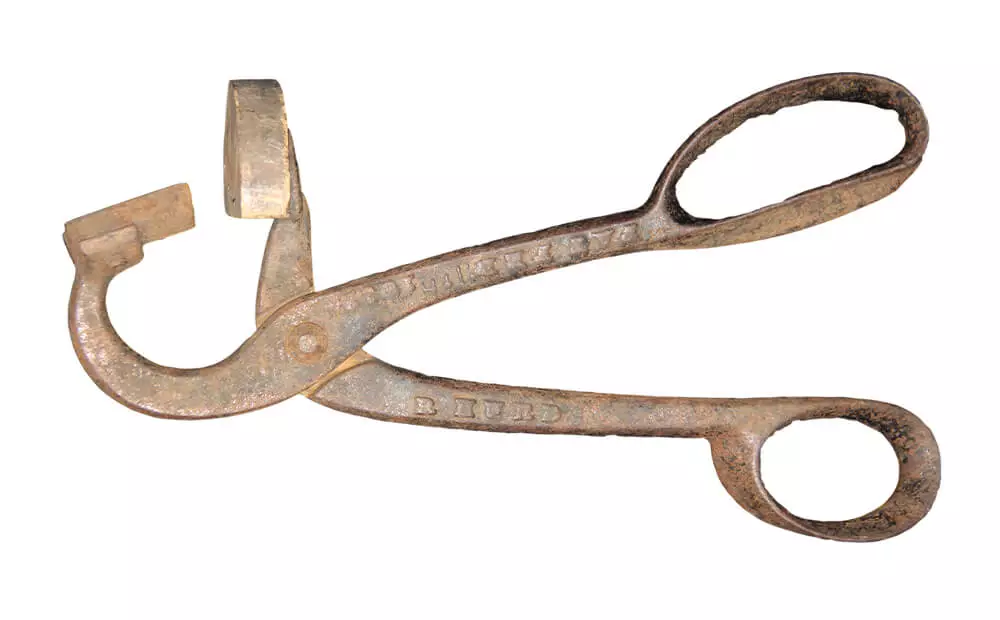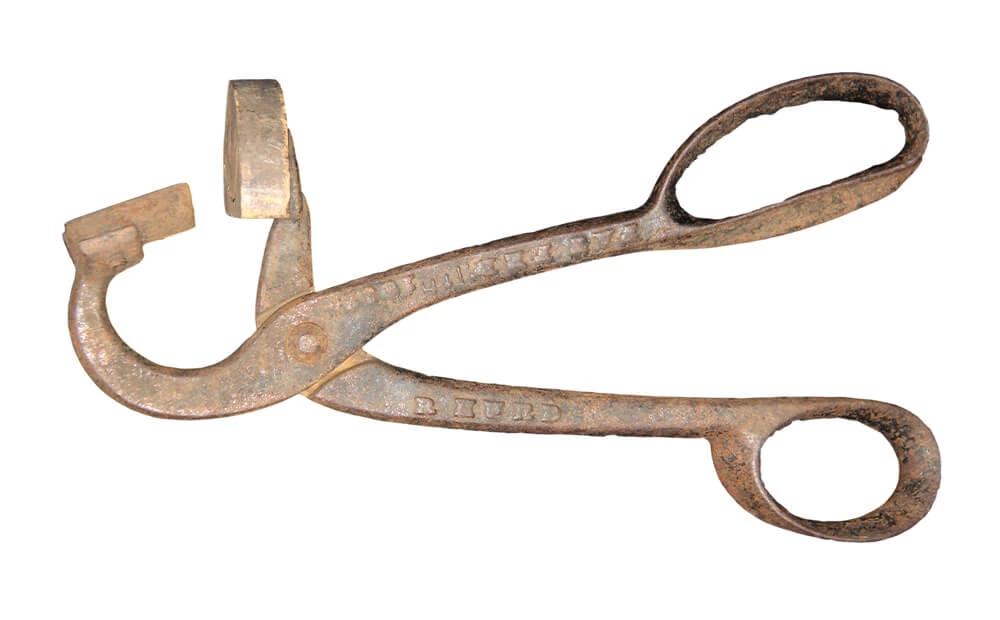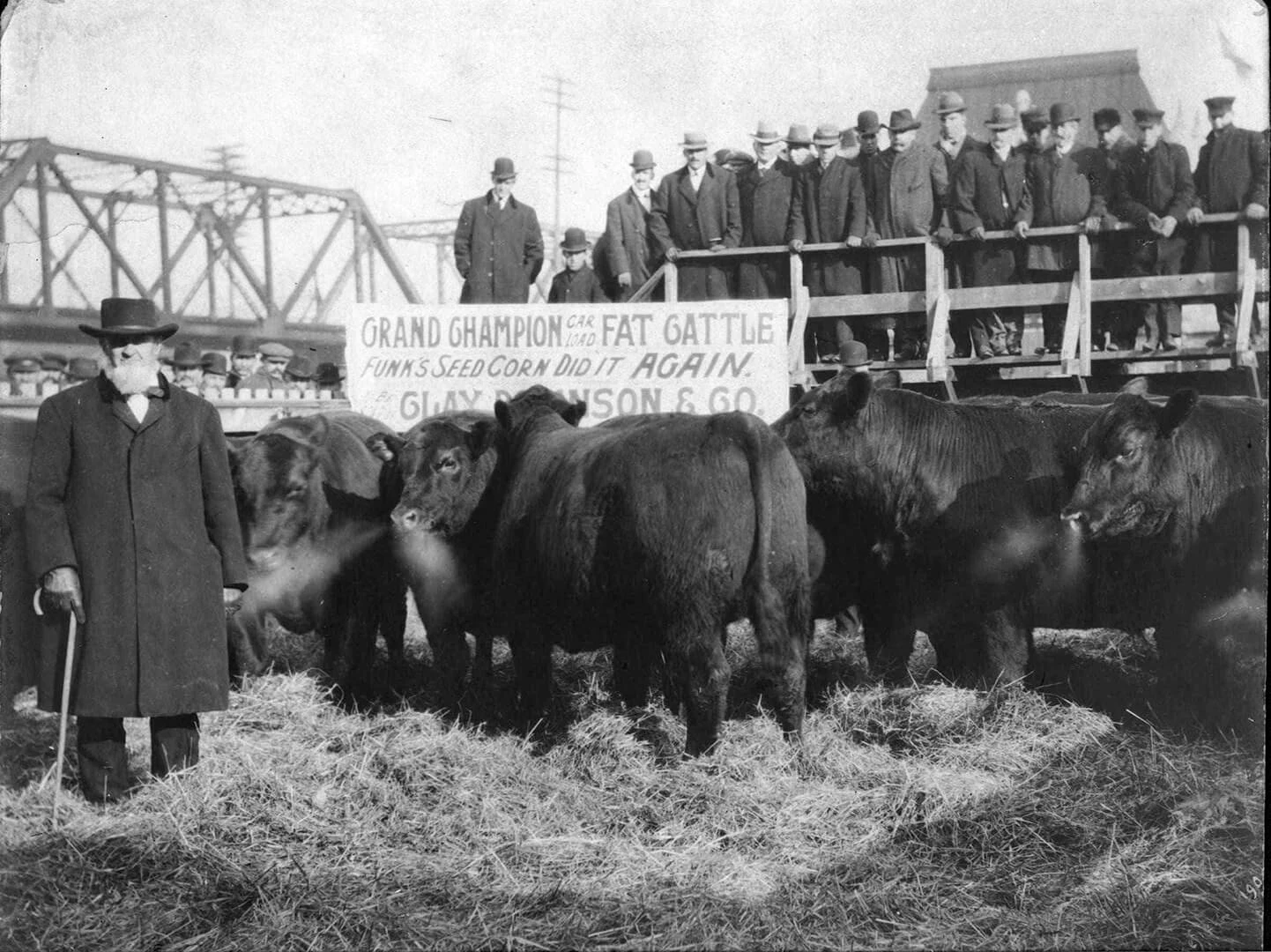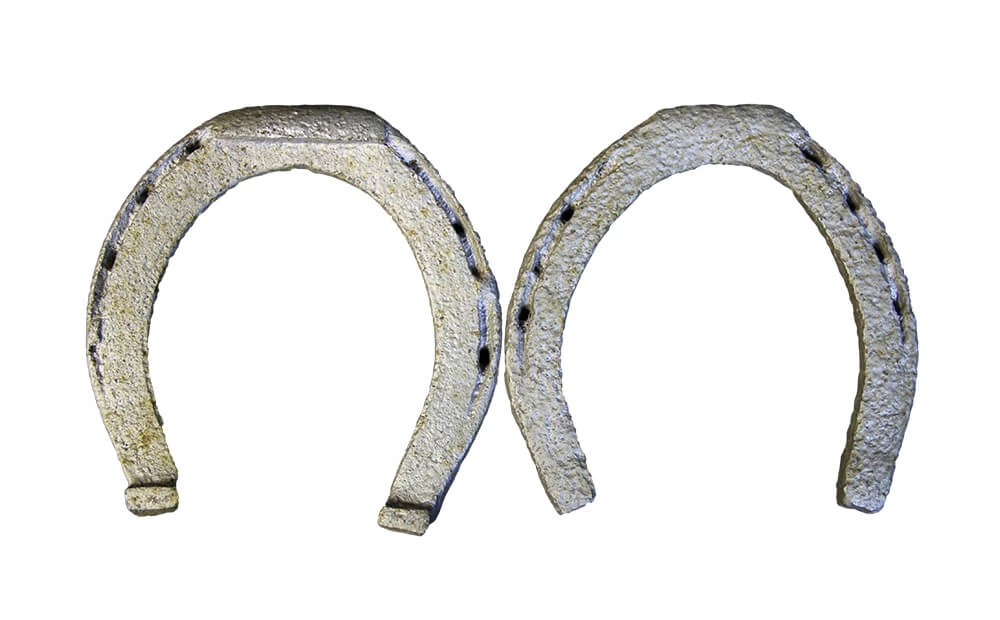Working the Land – 1853 to 1899: Feeding and Breeding Livestock
W.R. Duncan was a leader in the feeding and breeding of thoroughbred shorthorn cattle in McLean County.
Duncan settled on a farm southwest of Towanda along the Chicago & Alton Railroad in 1863, bringing with him from Kentucky a small herd of shorthorns.
Duncan spared no expense when it came to breeding quality cattle. In June of 1874 he traveled by rail to Racine, Wisconsin with two of his prize cows. There they were bred by the 11th “Duke of Geneva,” a prize winning sire (bull used for breeding purposes).
Duncan’s successful cattle business stimulated local shorthorn production. By 1875 there were several shorthorn cattle breeders in McLean County, including Noah Franklin, Nelson Jones, C.M. Nicholls, and Josiah Chorn.
In 1874 these breeders advertised a sale of their thoroughbred cattle.
“The largest sale of valuable stock ever made in McLean County, Ill.”
— Bloomington Pantagraph, July 13, 1874
McLean County farmers needed powerful work horses. The demand was met by a large group of area horsemen.
George S. Hanna of Bloomington, McNaught & Franklin of Lexington, Reed & Lake of Bloomington, J.G. Dobbs and George W. Stubblefield of Bloomington, James McKinney of Saybrook, George W. White of Towanda, the Moon Brothers of Lexington, and George Vendevender of Lexington were all successful horse breeders.
Ellis Dillon was the most successful of the many local horse breeders.
After earning good profits from the breeding of a few Percheron work horses, Dillon decided to expand. He imported a fine thoroughbred from Europe and bred it with his outstanding stock of mares. The investment brought him even greater success.
Dillon had so much success with “Old Louis Napoleon,” a Norman Percheron draft horse he imported from France, that he had an oil portrait of him painted by Lou Burke, a noted painter and illustrator of prize winning livestock.
J. M. Minton’s purebred boars, “Illinois Chieftain” and “Don Cossak,” brought him top dollar from farmers who paid him to breed their sows.
Minton, who farmed in Randolph Township was a successful McLean County breeder and feeder of Poland China hogs.
The offspring of his registered sows also earned him good profits.
In 1877 McLean County farmers produced more beef than any other Illinois county, shipping thousands of dollars worth to distant markets via the railroad.
With six railroads passing through McLean County, the shipment of livestock grew dramatically.
The Funks of Funks Grove regularly shipped their cattle, sheep, and hogs to the Chicago Union Stock Yards via the railroad.
Calf weaner, circa 1890

A calf weaner, like this one used on the Bozarth farm in Old Town Township, was secured to a calf’s nose when it was time for it to be weaned. When the calf tried to nurse, the mother cow pushed the calf away so as not to be pricked by the spikes.
Donated by: Fran Bozarth
855.396

Hame, circa 1875
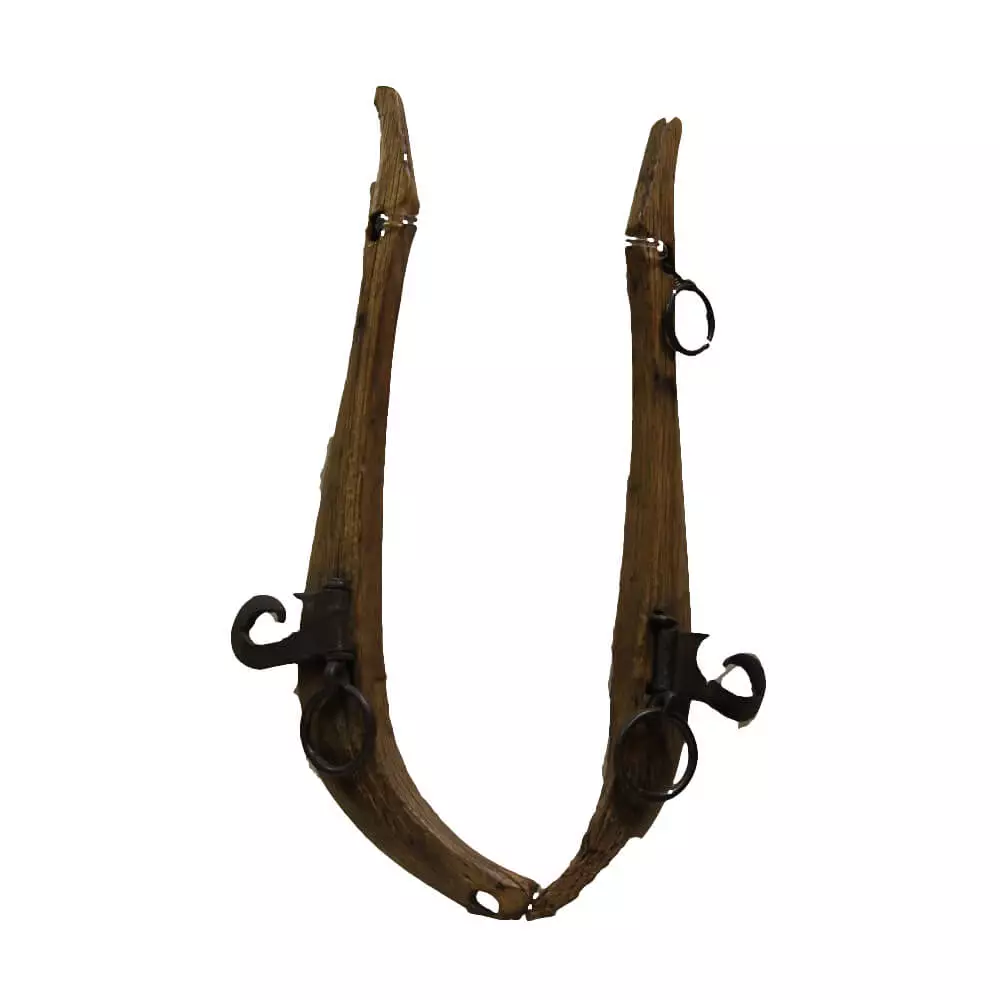
View this object in Matterport
A hame, like this one, was secured to a padded leather collar. Together they enabled a horse to pull equipment using his entire body.
725.23

 Making a Home
Making a Home
 A Community in Conflict
A Community in Conflict
 Working for a Living
Working for a Living
 Farming in the Great Corn Belt
Farming in the Great Corn Belt
 Abraham Lincoln in McLean County
Abraham Lincoln in McLean County

